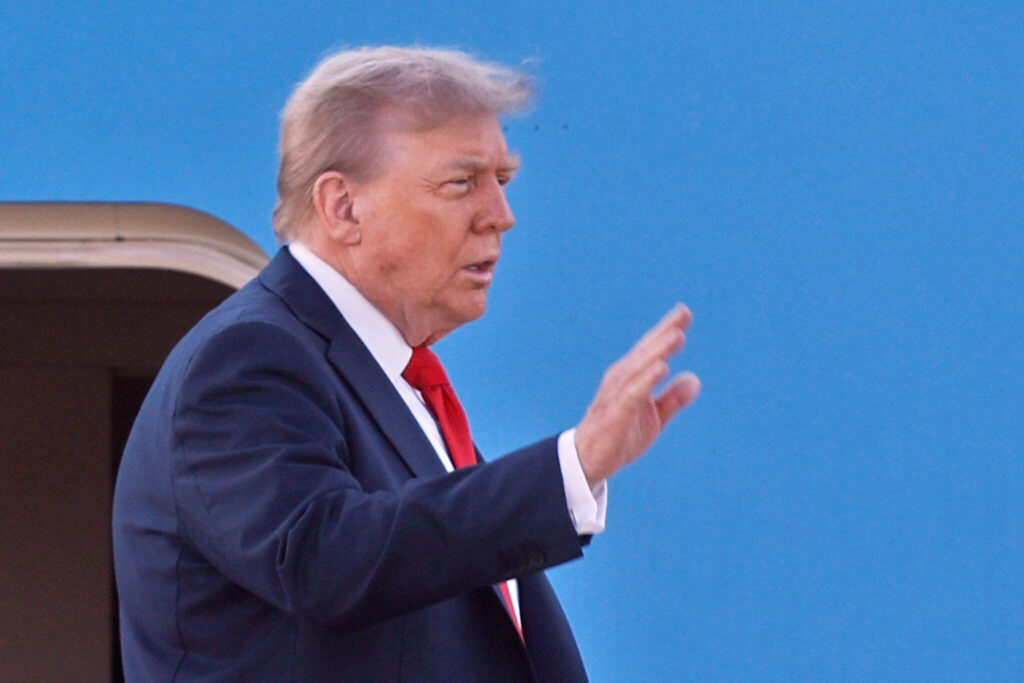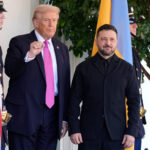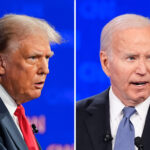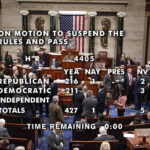Trump Targets Steel and Chip Imports with Tariffs/ Newslooks/ WASHINGTON/ J. Mansour/ Morning Edition/ President Donald Trump announced he will impose new tariffs on steel and semiconductor imports in the coming weeks. The duties will start at lower rates before sharply increasing to encourage U.S. manufacturing. The move continues Trump’s aggressive trade policy aimed at boosting domestic production.
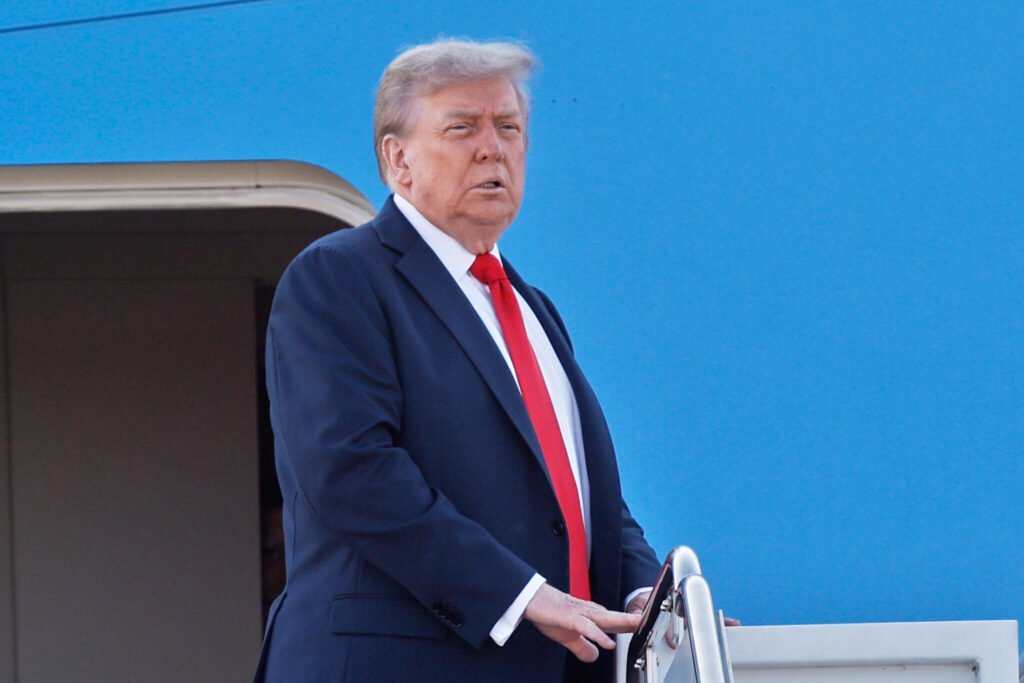
Trump’s Steel and Chip Tariffs Quick Looks
- Announcement Location: Aboard Air Force One en route to Alaska
- Products Affected: Steel and semiconductor chips
- Tariff Structure: Low initial rate, steep increase over time
- Goal: Incentivize U.S. manufacturing and reduce import reliance
- Previous Steel Tariffs: Raised to 50% earlier this year
- Semiconductor Tariff Plan: 100% duty unless companies build in U.S.
- Pharmaceutical Precedent: Similar phased tariff strategy used
- Apple Investment: $100 billion pledged for U.S. expansion
- Global Trade Impact: Part of broader high-duty trade agenda
- Uncertainty: No exact rates or start dates given
Deep Look: Trump to Set New Tariffs on Steel and Semiconductors to Boost U.S. Manufacturing
ABOARD AIR FORCE ONE – August 15, 2025 — President Donald Trump announced Friday that his administration will impose new tariffs on steel and semiconductor chip imports within the next two weeks. Speaking to reporters aboard Air Force One before his scheduled meeting with Russian President Vladimir Putin in Alaska, Trump outlined a phased tariff plan designed to spur domestic manufacturing.
Phased Tariff Strategy
According to Trump, the tariffs will start at a lower rate to give companies time to ramp up U.S.-based production facilities before climbing to significantly higher levels. The approach mirrors a similar strategy he has promoted for the pharmaceutical industry, which begins with moderate duties before escalating sharply.
“I’m going to have a rate that is going to be lower at the beginning — that gives them a chance to come in and build — and very high after a certain period of time,” Trump said.
While Trump did not provide exact percentage rates or implementation dates, he emphasized his belief that companies would prefer to manufacture in the United States rather than face steep tariffs.
Broader Trade Policy Context
The move marks the latest escalation in Trump’s aggressive trade agenda, which has already imposed higher duties on exports from nearly every country. Targeted tariffs have been applied to key industries such as automotive manufacturing, and existing measures on steel and aluminum were raised earlier this year.
In February 2025, Trump increased tariffs on steel and aluminum to 25%, then announced in May that the steel duty would double to 50%. It remains unclear if the new announcement signals an additional increase or a new set of targeted measures.
For semiconductors, Trump previously said he would apply a 100% tariff on imported chips, with exemptions for companies committing to build manufacturing capacity in the U.S.. These measures are intended to reduce reliance on foreign chip production, particularly from Asia, where the majority of global semiconductor manufacturing is concentrated.
Apple’s $100 Billion U.S. Investment
The president’s remarks came alongside news that Apple will invest an additional $100 billion in its U.S. operations. While details of the investment plan were not immediately disclosed, Trump linked the tech giant’s commitment to his administration’s push for domestic production in critical technology sectors.
Apple’s announcement was portrayed by the White House as evidence that large corporations are responding positively to policies designed to reshore manufacturing and reduce supply chain vulnerabilities.
Implications for Global Trade
Trump’s tariff plan is expected to further disrupt international trade, particularly with countries that are leading exporters of steel and semiconductor products. China, South Korea, Taiwan, and several European nations could face significant market impacts if U.S. import barriers tighten.
Critics argue that such tariffs risk raising consumer prices and straining diplomatic relations, while supporters say they protect national security interests and ensure economic independence in strategic industries.
Global markets are watching closely for formal tariff details, as previous trade actions under Trump have led to retaliatory measures from major trading partners.
Tariffs as a Manufacturing Incentive
Trump defended his strategy as a means of forcing companies to invest domestically. By setting initial tariffs at a manageable rate, he aims to give manufacturers time to secure land, build facilities, and start production in the U.S. The subsequent rate hikes would then make foreign sourcing economically unviable.
The phased model also provides political advantages, allowing the administration to claim early trade policy victories while giving businesses an adjustment period.
What’s Next
The White House is expected to release formal tariff rates and timelines in the coming weeks. Industry groups representing both steel producers and semiconductor manufacturers are preparing for the announcement, with some lobbying for targeted exemptions to protect specialized imports.
Meanwhile, trade analysts warn that additional tariffs could contribute to inflationary pressures already present in the U.S. economy, especially in sectors heavily dependent on steel and advanced electronics.

